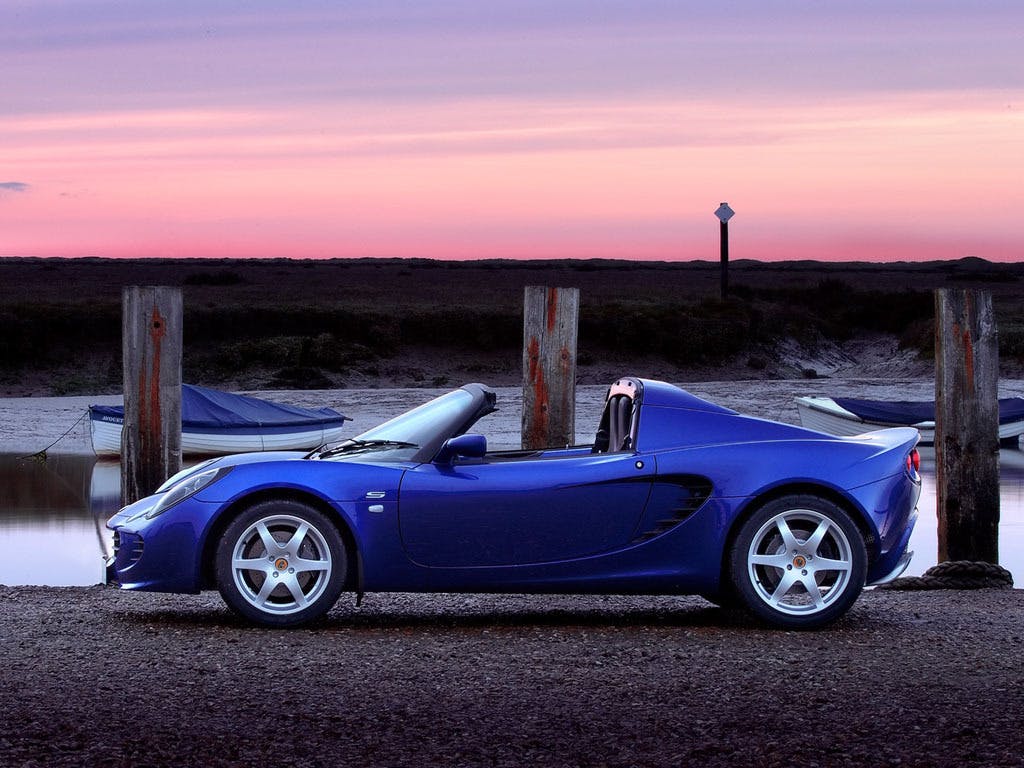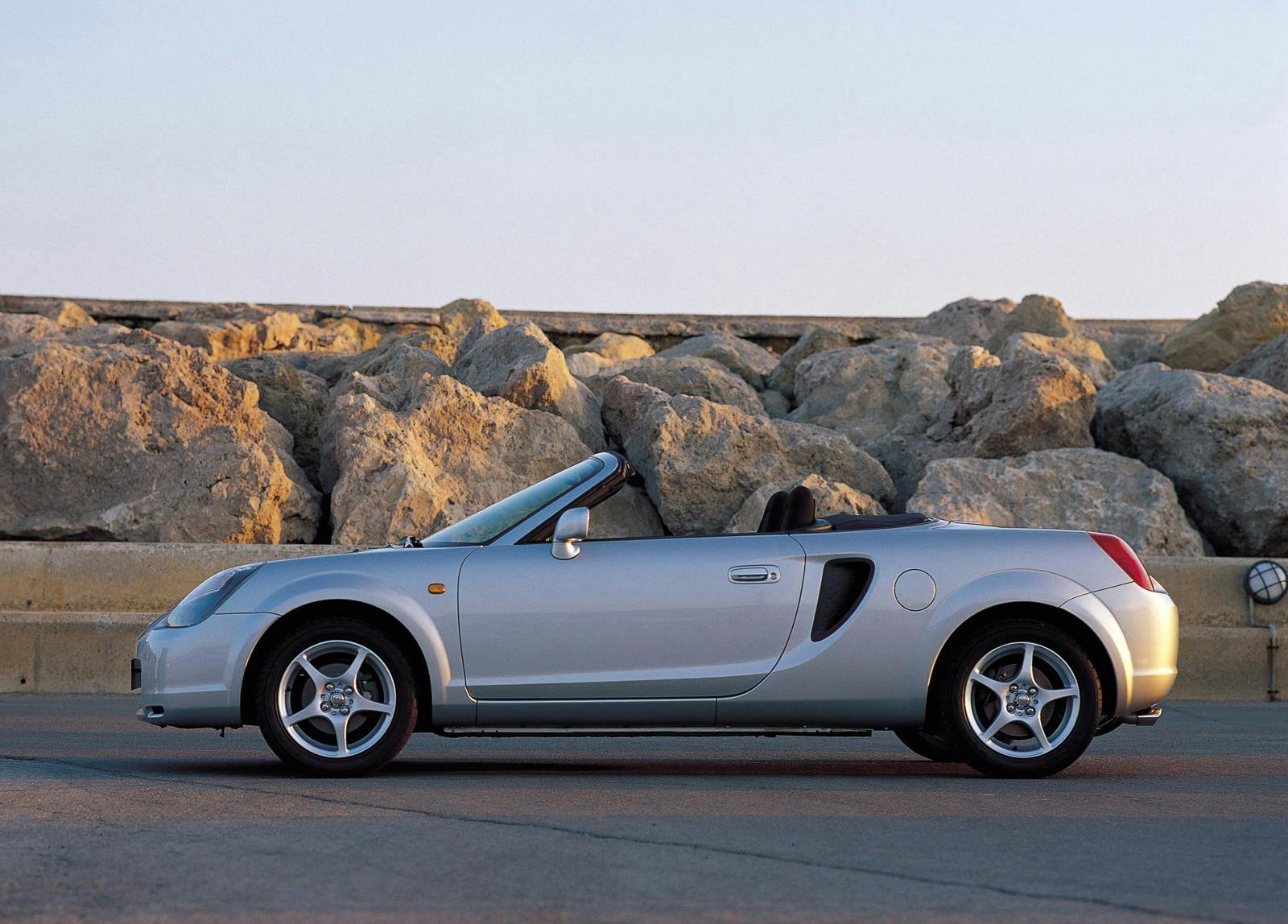Toyota MR2 and Lotus Elise Are A Lesson in Substitution
My freshman marketing professor was fond of a theory called “the wheel of retailing.” It sounded like a fortunately never green-lit game show, but it posited that hungry entry-level retailers would first price their merch at rock-bottom prices, and then gradually move up-market as they became more established, thus, making room at the bottom again for the next rock-bottom retailer. Hagerty Price Guide publisher Dave Kinney has adapted it to the collector car world, calling it “the principle of substitution.” It’s what happens when car “A” gets so hot that it prices a large part of its audience out of the market. Said market then scurries off to car “B” driving up prices there, and making room for still a new substitute.


Maybe the latest example of the principle of substitution is the dynamic between two pocked-sized mid-engine sports cars of the 2000s—the Lotus Elise the Toyota MR2 Spyder. Ten years ago, the Elise was a screaming bargain relative to their looks, performance, and fun factor. Lotus’ reputation for fragility didn’t help their resale value. Neither did the company’s lack of name recognition in the U.S., nor the Elise’s laughable impracticality. But a funny thing happened. With the passage of time, word got out that these were in fact reasonably reliable little cars. Sourcing mechanicals from Toyota can do that, and the sheer simplicity of the Elise’s layout and appointments meant that there was little else to go wrong. The pandemic-era collector car market heated up in the early 2020s and demand soared for lightweight, driver-focused analog sports cars, of which the Elise is one of the very best and most affordable. More exotic and expensive mid-engine cars appreciated, and so did the Elise.


If you’re a fan of modern, featherweight sports cars, you don’t have many places to go, especially if you find NA Miatas just a little too mainstream. The MR2 Spyder, however, is a delectable little mid-engine confection that hasn’t always gotten much attention. Frankly, it’s still hard to believe Toyota ever built it. With the exception of its mid-engine configuration, it bore little resemblance to its first- and second-generation MR2 predecessors, which were both a bit more ambitious and available with a supercharger (first gen) or turbocharged (second gen) engine.
Toyota sold the third and final generation MR2 in North America from the 2000-05 model years. Over 7000 buyers lined up in the first year, but by the final model year that number had shrunk to just under 800. Around 28,000 total were sold in North America with either a 5-speed manual or a sequential automated manual gearbox Toyota called the SMT.
The MR2 Spyder with 140hp, and 125 lb. ft. of torque out of a 1.8 liter engine wasn’t exactly muscular, but at around 2250 pounds it had a more than respectable power-to-weight ratio. The MR2 Spyder could get to 60 mph in a Miata-competitive time of roughly 7 seconds. Car and Driver loved the MR2 Spyder, comparing it to a pint-sized, bargain-priced Porsche Boxster. They wondered in their first drive from April of 2000 if it was almost too quiet and refined for a mid-engine roadster. “The only criticism we can level at the Spyder’s handling is that the steering (although accurate and well isolated from road shock) is a touch lacking in feedback. In truth, the whole car is much more civilized than we’d expected. For $23,558, the levels of refinement come as a real surprise.”
As refined as the MR2 was, the Lotus Elise was equally unrefined. It was lighter, its own 1.8-liter Toyota engine was more powerful, and it had fewer creature comforts. It was also more expensive, with a 2005 MR2 starting at around 25 grand vs. about 40 for the Elise. The Lotus is rarer, too, with roughly 6000 Elises and Exiges sold in this country, about half of them 2005 Elises. The similar look and layout of the Toyota and Lotus, though, are impossible to ignore. If the Lotus becomes unattainable, the Toyota is the natural backup plan.
As with the Elise, prices for the MR2 Spyder were surprisingly reasonable until recently. About $7,500 to $9,500 for nice, driver-quality 5-speed manual examples was the norm, with higher mileage cars often found for as low as $5,000 or so. Kiss those days goodbye. Prices have increased significantly in the last several years, with really good #2 (“excellent”) condition cars now in the low 20 grand range, roughly where Elise prices were when they bottomed out. MR2 values had actually been increasing before the Elise, but they surged at a steeper clip after the Lotus’ massive growth in the early 2020s. Neither car is likely to go back to its pre-pandemic pricing and there’s no natural next step down the price ladder from the MR2, either, so consider this a harsh lesson in the wheel of retailing.

***
Check out the Hagerty Media homepage so you don’t miss a single story, or better yet, bookmark it. To get our best stories delivered right to your inbox, subscribe to our newsletters.



“Lotus- for those who know the difference”
The MR2 here was a failure for sales. The lack of power, ehh handling, forgettable styling. Also it is not a Lotus.
The power to weight is what you would bind in a 1980’s car. So do not expect much.
With so few cars made parts will be hard to find and expensive. This at best will be a small time cult car.
Either buy the Lotus or get a second Gen MR2 if you can find one. Make sure it is a loaded turbo and that the upkeep maintenance has been done or that you can do it yourself. Repair cost sre there with the Lotus.
I find the handling to be exceptional.
High power is something that either people who don’t have much driving skills need to be fast or people who can drive rally well are able to use to be really fast. You don’t need all that much power to have fun with a well balanced car, which the MR2 is, A skilled driver wil be able to humiliate much more powerfull cars on track with one of these
2 GEN was twin entry turbo, is just a manifold with 2 throttle bodies and one turbo. It’s just a friendly correction.
Updated, thank you!
Good article, I was shopping these and very happily ended up with an Elise in 2020. But I have a slight correction, the second generation mr2 could be had with a SINGLE turbo that is twin entry, not a twin turbo.
In 2004 I had a 111R. I was 24, it was my first new car, I took it to the Nurburgring and loved it.
Twenty years later I have a 2000 MR2 Spyder with a 1MZ 3.0 V6, coilovers, polybushes, the usual. As I bought someone else’s finished project it was great value at 6k GBP.
The only thing I *really* miss from the Elise is its rigidity and damping finesse, the Toyota shakes on rough roads and has a compromised bouncy low speed ride. I suspect cheap BC monotubes are to blame so I have some Tein monoports with EDFC to hopefully bring some sophistication to the party.
As a cheap 6th car in the family fleet it’s a great antidote to the EV daily, diesel family van, etc. The way it carves into bends is a joy, the shift is short and precise, it sounds great and has loads of torque.
Ev
Just an empty vessel.
Be sure to fully check out the MR2 Spyders with the sequential automated manual gearbox. When they work they are great when they are having issues it can get pricey to fix.
Boxster is the better deal, driver, etc. All day long.